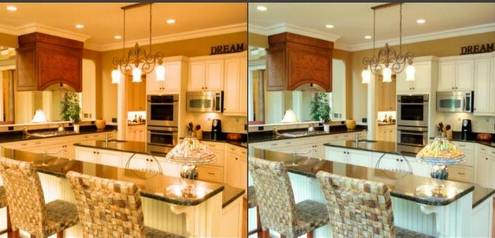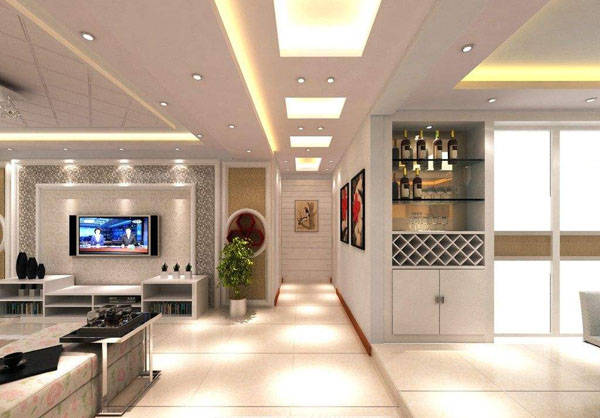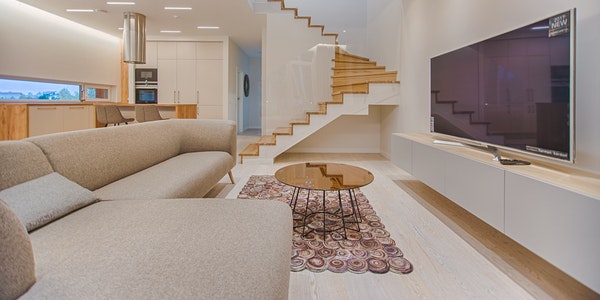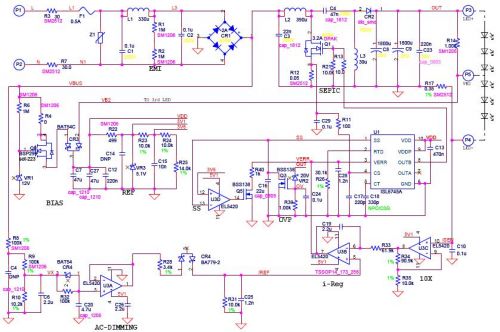Basic Advantages of LEDs
There are many reasons for home users to adopt high-brightness LEDs. HB LEDs save a lot of energy and are also safer for the environment because they do not contain mercury. High Bright LEDs have the longest lifespan and can reduce maintenance costs. HB LEDs also improve safety, as they do not fail immediately, but rather gradually age.
High-power LEDs require a high drive current of 350 to 1000 mA. Using the latest technology, each LED can produce a luminous flux of 40 to 80 lumens, and the power is generally 1 to 3W.
After entering the 21st century, LED technology has been developing steadily. Just two years ago, LEDs surpassed all other light sources in light output (measured in lumens per watt). Coupled with massive energy savings, LEDs are sparking a revolution in home lighting.
Below, we will compare HB LEDs with widely used white paper lamps and fluorescent lamps, and we will also give a circuit example for a home application.
Compare Light Sources
Consumers who understand the benefits of HB LEDs will find ways to use HB LEDs as much as possible. From the data comparison in Table 1, it can be found that HB LED is the lighting solution with the highest brightness.
| HB LED | Incandescent lamps | fluorescent lamp | energy saving lamps | |
| efficiency | 22% | 0.7-2.6% | 8-15% | 9% |
| The relationship between color tone and current | very small | will change | no | no |
| Lighting angle | focused | Reflective | Reflected | Reflective |
| Lifespan (H) | 50,000 | 1000-2000 | 30,000 | 10,000 |
| Vibration/Shock | solid state | fragile | weak | fragile |
| Size | Small | Big | Large | Big |
| Does it contain mercury | No | No | Yes | Yes |
| failure mode | decay | burn out | Burnt | burn out |
| Drive circuit | need power | direct AC connection | ballast required | ballast required |
Table 1: Comparison of different light sources
Let’s take a closer look at this table. The energy efficiency of a light source is similar to efficiency. Compared to the amount of heat generated, how much of the energy input into the bulb becomes light? Users want this number to be higher, and apparently the HB LED does that. The color tint of an incandescent lamp is most likely to change if the drive current fluctuates.
The main advantage of fluorescent lamps and HB LEDs compared to incandescent lamps is longevity. One of the main reasons is that incandescent light bulbs are being phased out in many countries. Next, HB LEDs may surpass fluorescent lamps in penetration. Because HB LEDs are solid-state (made of silicon, which is not brittle), they are very small in size and contain no harmful chemicals. No special environmental handling is required.
Design Goals for HB LED Lighting
For consumers to switch to HB LEDs, HB LEDs must be of high quality. Consumers demand a power factor of at least 90% and an efficiency of 80% or higher.
In DC applications, the maximum input voltage cannot exceed 40V. In AC applications, an input voltage of 120V or 240V (270V maximum) may be used. HB LEDs must be driven with pulse width modulators operating at frequencies above 120Hz to reduce annoying visible flicker. Sometimes, this frequency also needs to be variable.
In addition to these design constraints, it is up to the engineer and the application to decide whether to use an isolated or non-isolated design. Finally, if necessary, a complex dimming circuit may be considered.
As you can see, there is no one-size-fits-all solution. Design considerations are interlinked. Each scheme requires special design based on the number of LEDs and the current flowing through the LEDs.
Designers also need to adjust for different electromagnetic devices, as well as the power devices and output capacitors chosen.
Application circuit
HB LEDs cost around $1 to $2. Since HB LEDs are used in series in each design scheme, the cost constraints of the converter are not considered in the design.
The first controller introduced is the ISL6721. The ISL6721 is a single-ended pulse width modulated current mode controller, its peak current mode control can effectively solve the instantaneous power problem, and provides built-in overcurrent protection.
A large contract manufacturer has already used the ISL6721 to produce a product that can replace the T8 circuit currently used (replacement of the traditional ballast circuit in fluorescent light starters). The ISL6721 can also be set up as an alternative to incandescent lamps. A non-solid-state flyback solution is currently used in a shopping mall in Asia. The scheme uses 10 HBLEDs with an output of 10W and an efficiency of 82%.
To be truly competitive in the home market, HB LED lighting solutions must also provide dimming capabilities. Smart circuits can do this. Remember, LEDs are driven by a PWM controller. That is, the LEDs are not always “on”. The number of pulses to power the LED is controlled by the controller and is variable. As it happens, the controller has done this work also.
Figure 1: Spotlight power adapter circuit with dimming function that can drive 6 LEDs
How the power adapter works
Figure 1 shows the complete circuit diagram of a spotlight scheme consisting of an adapter and dimming circuit for 6 LEDs. At the heart of the design (excluding the HB LEDs, of course) is the ISL6745A controller.
The top right device forms a SEPIC controller that drives 6 HB LEDs strung together. The surrounding amplifiers perform current regulation, short circuit protection and overvoltage protection. In the lower left corner you can find the AC dimming circuit. The amplifier output of the dimmer is filtered and then used as a reference point for the current regulator, which is fed back into the control loop.
The bias voltage VDD of the ISL6745A ranges from 6.5V to 20V, and the output of the low-side FET driver is 12V, 1A, which can drive a low-side FET (Q1 in this design), the gate of a high-voltage driver IC, or a gate driver transformer.
The ISL6745A is the most popular HB LED driver. In addition to the usage shown in Figure 1, the switching frequency, soft-start, and over-temperature protection of the ISL6745A can also be adjusted. You can also adjust the “dead time” precisely.
The ISL6745A is available in a space-saving MSOP-10 package. The flexibility of the ISL6745A is also a special feature. It can work in either isolated or non-isolated mode, and the dimming function is also optional.
Conclusion
HB LEDs are the greenest alternative to consumer lighting, and technology has advanced enough to make it a viable option. Alternatives to incandescent and fluorescent lamps are already on the market. To save energy, extend service life, improve safety and increase reliability, use HB LEDs.
Making LED Lighting with Energy Saving Lamp Housing and High Brightness LED
A low-power indoor lighting lamp made of energy-saving lamp shell and four high-brightness white light-emitting diodes with a diameter of 1mm, the working principle is as follows.
After the 220V alternating current is limited by C1 and stepped down, it is then rectified by D1 to D4 to supply the post-stage circuit to work. C1 is the bleeder resistor, and C2 filters to provide a smooth power supply. The current supplies power to 4 LEDs through the LM317 constant current, and R2 acts as a current limiter.
This circuit has no special requirements for components, and the component parameters have been marked in the circuit. In addition, the high-brightness light-emitting diodes of this type of circuit have similar step-down requirements, so as not to affect the normal light-emitting work. The circuit board can be self-made according to the selected material.





